What Is Search Intent?
Search Intent (also known as “User Intent”) is the main goal a user has when typing a query into a search engine. Common types of Search Intent include informational, commercial, navigational and transactional.
For example, let’s say you want to cook up some kale for dinner.
But you’re hungry and want to eat NOW.
So you head to Google and search for “quick kale recipes”.
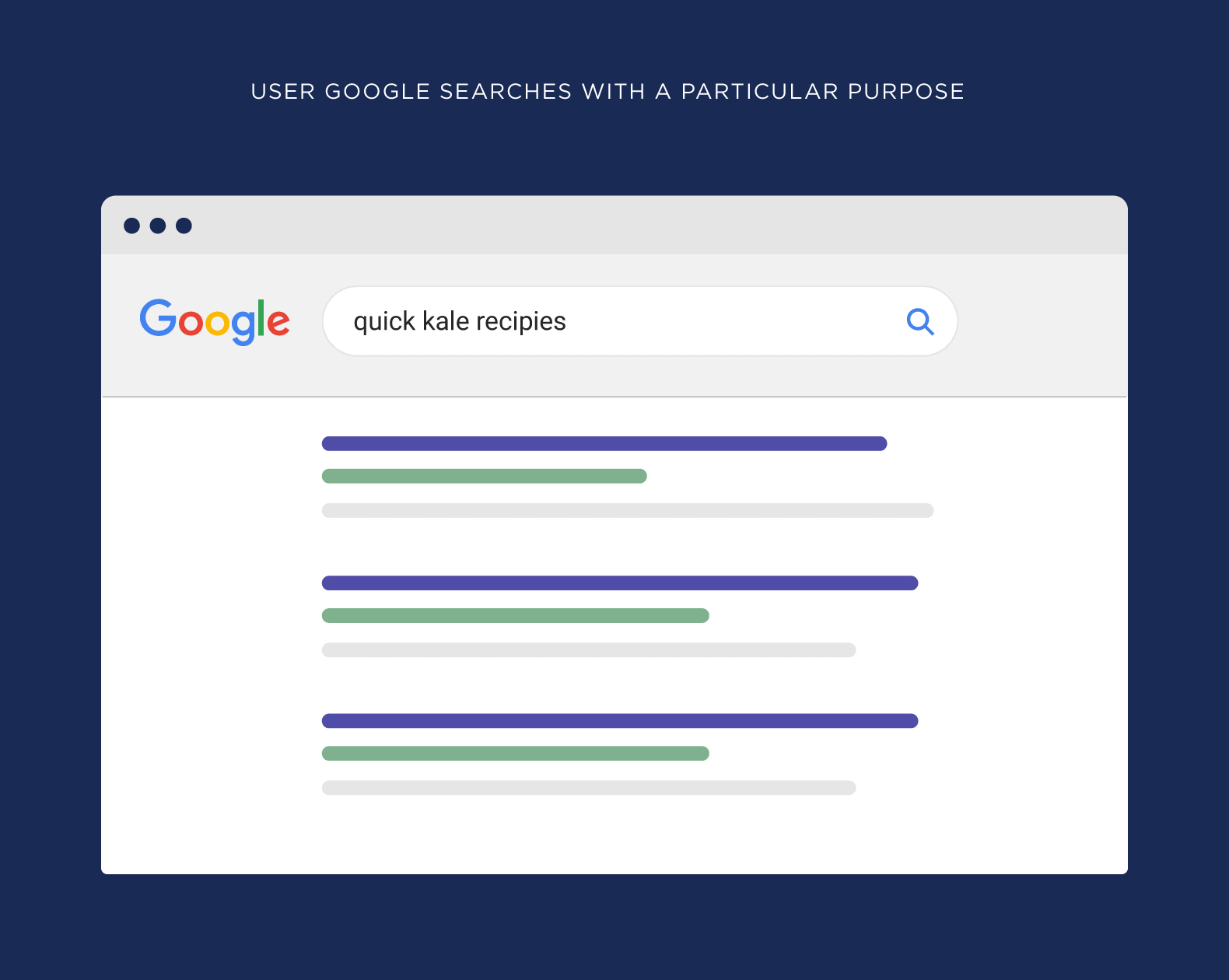
The first result you click on looks OK at first.
But you quickly realize that the recipe takes over an hour.

So you quickly click over to the search results to find something else.
And the next time you strike gold.
This result is a recipe that takes 10 minutes from start to finish…
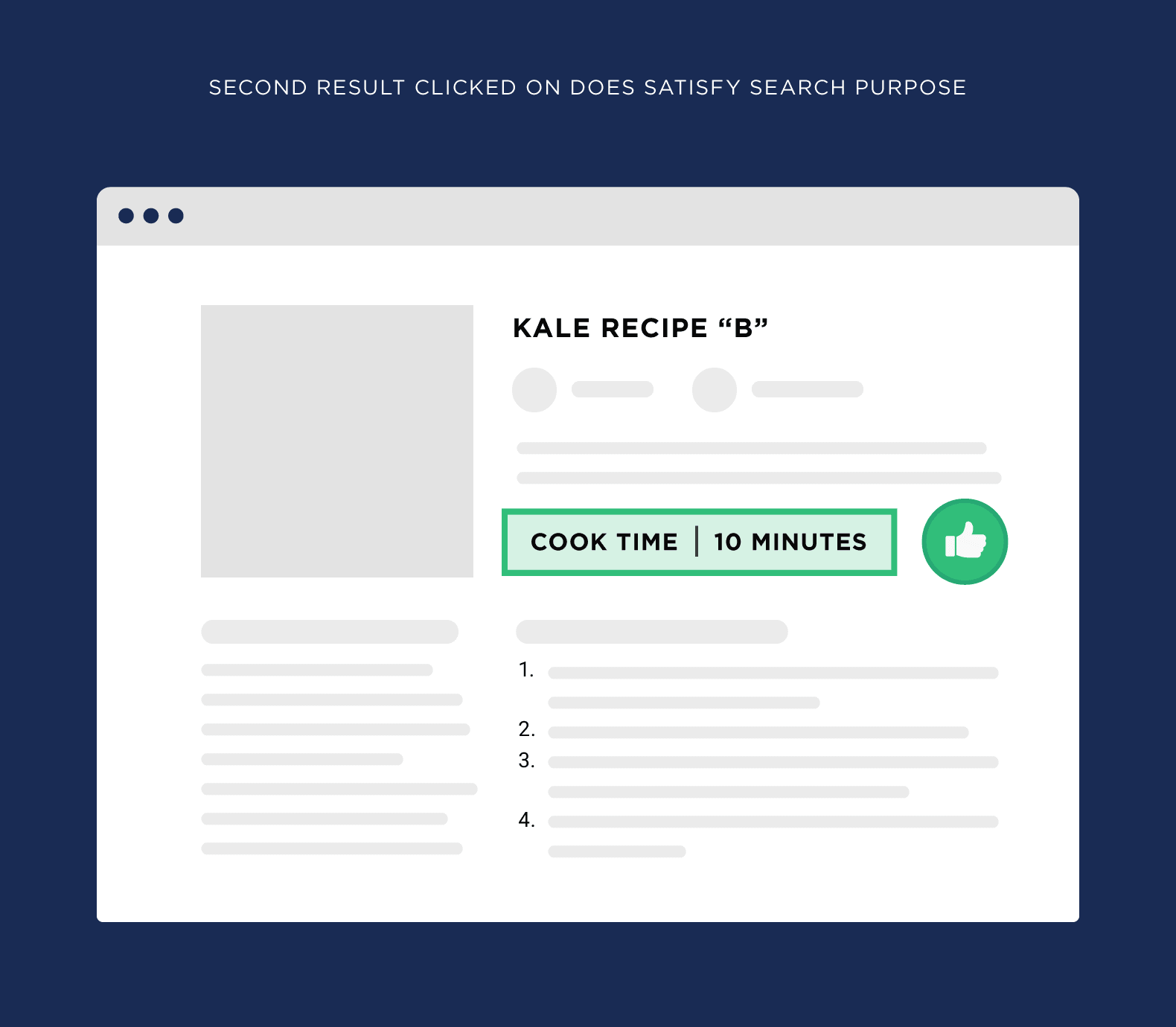
…which is EXACTLY what you’re looking for.
If enough people that search for “quick kale recipe” feel the same way, that result will get a significant rankings boost.

Why Is Search Intent Important?
Simply put: satisfying Search Intent is ultimately Google’s #1 goal.
So if you want to succeed with SEO and content marketing today, Search Intent needs to be a big part of your approach.
In fact, Google’s most recent edition of their Quality Rater Guidelines are OBSESSED with Search Intent.

And Google recently published a report called: “How Search Intent Is Redefining the Marketing Funnel”:
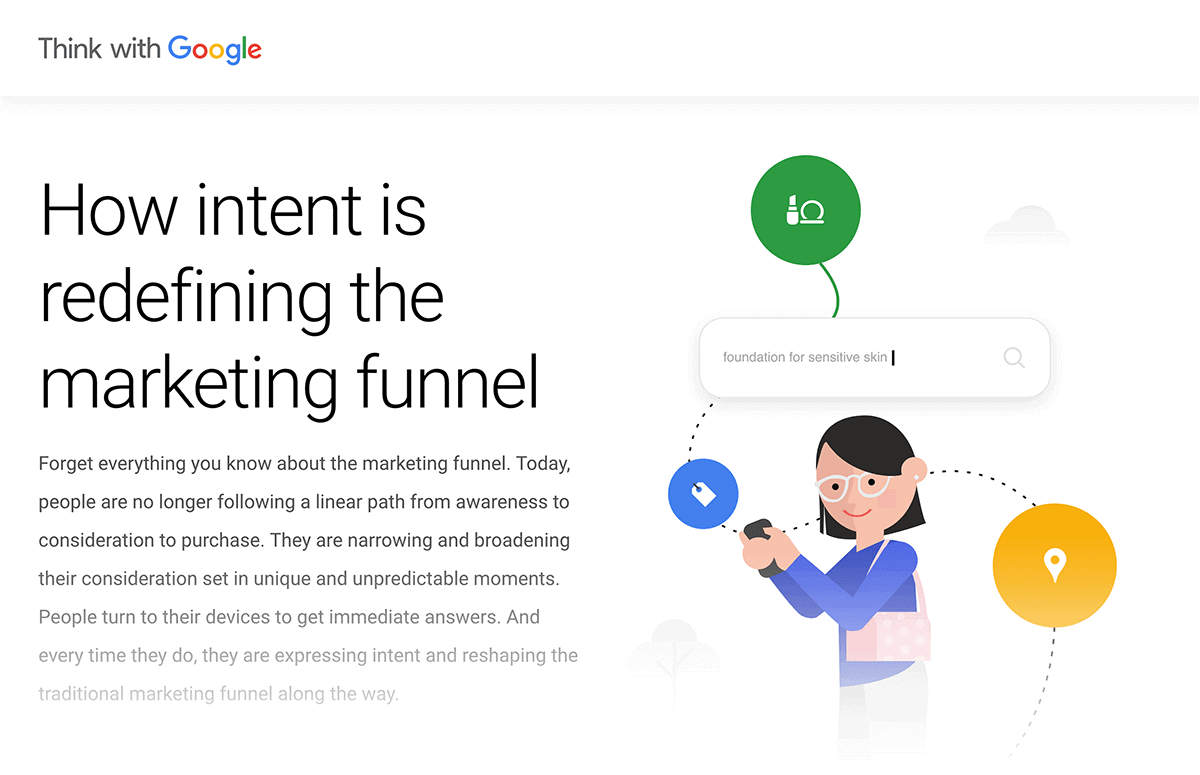
In other words: backlinks and other traditional Google ranking signals still matter.
But if your page doesn’t satisfy Search Intent, it’s not going to rank.
Let’s look at a real life example of Google ranking a page higher in the results based largely on Search Intent.
A few years ago we published a post called: “SEO Strategy Case Study: From #6 to #1 In One Week”.
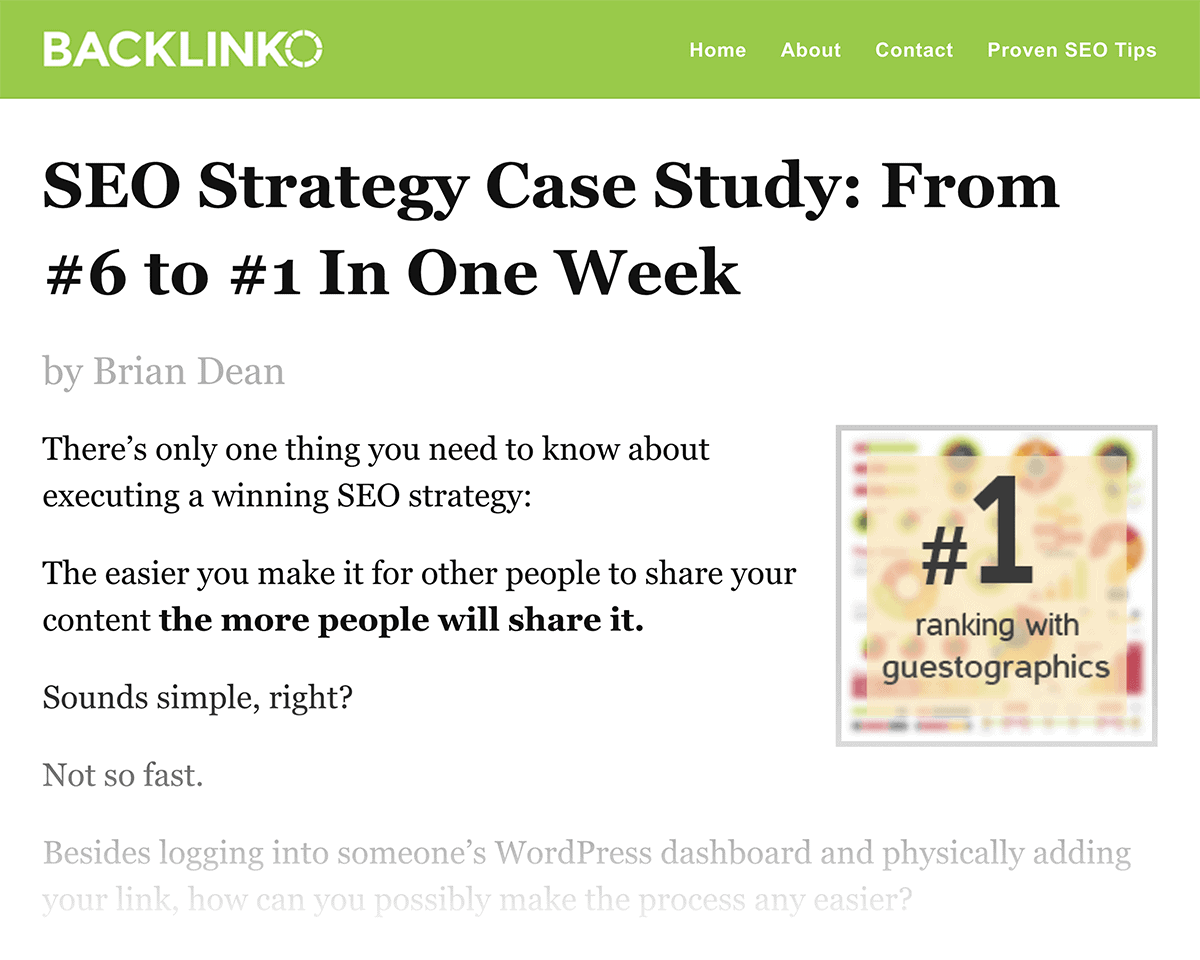
There’s no doubt that this was a piece of high-quality content. The type of high-quality content that Google wants to rank.
This post was written by an SEO expert (me).
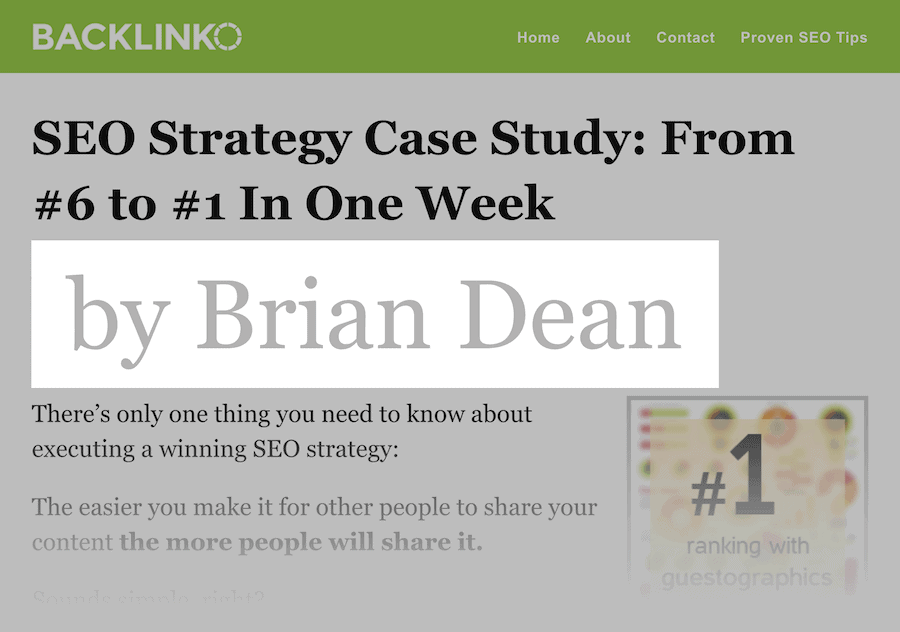
It included lots of tips and strategies you couldn’t find anywhere else.

Plus, we added dozens of visuals, screenshots and other forms of multimedia to the content.

And, because the content was really good, lots of bloggers in the digital marketing space linked to it.
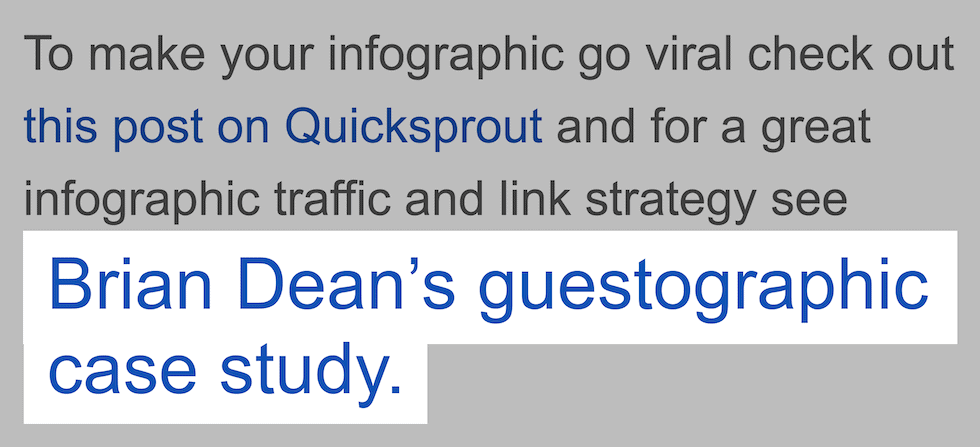
So in theory, this post should have ranked in the top 3 for my target keyword: “SEO strategy”.
But that wasn’t the case. In fact, that post was stuck on the 2nd page of the search results for MONTHS.
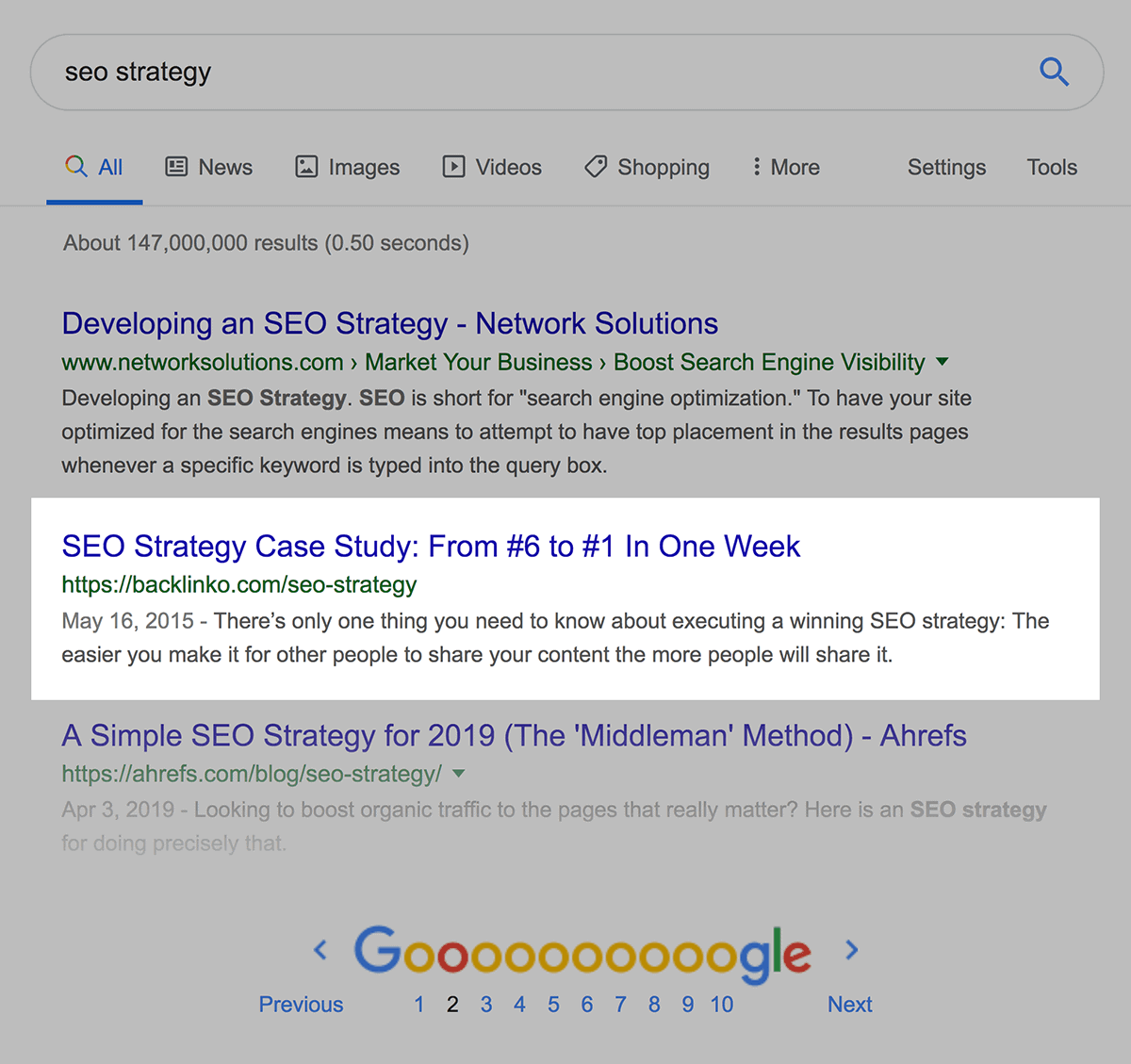
And when I looked at the other results that were ranking for that term, I realized that my post didn’t satisfy user intent. Not even close.
Most of the other content that was ranking for “SEO strategy” outlined a high-level SEO approach.
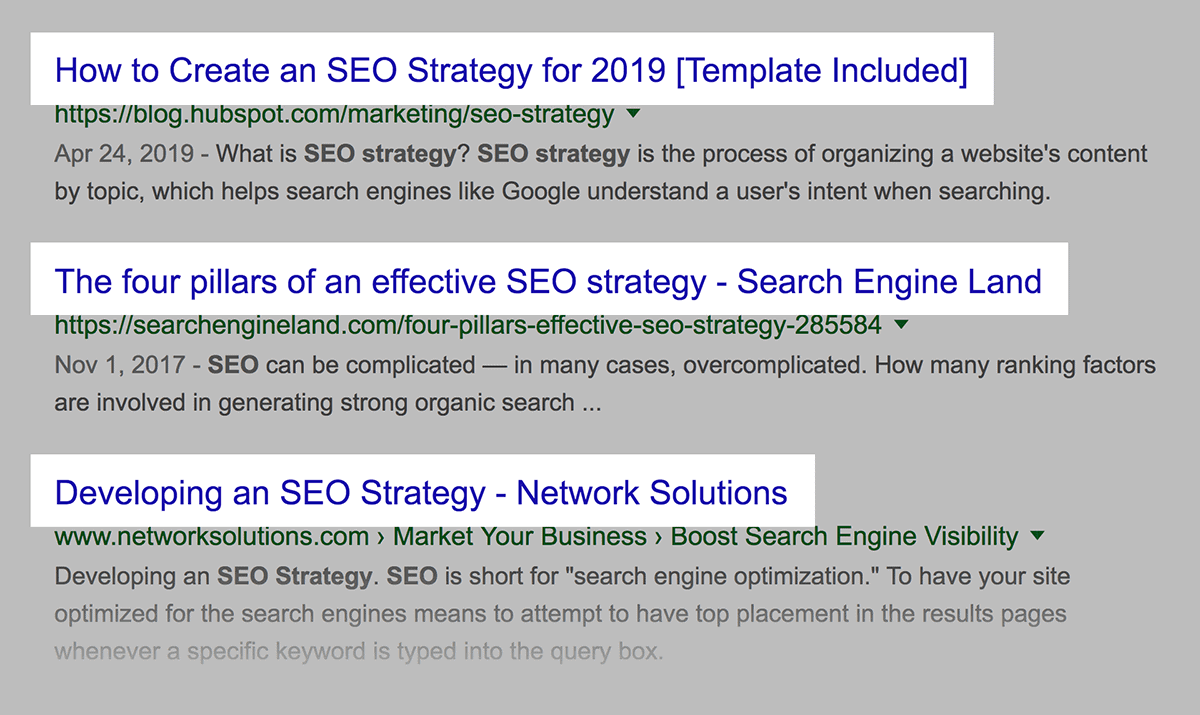
My content? It was a case study of ONE strategy.

So I rewrote this post from scratch. Specifically, I did my best to make my content a 1:1 match for Search Intent.
The result? This post that outlined an effective SEO strategy.

And it worked! Today, thanks to that post satisfying Search Intent, it now ranks in the top 3 for my main keyword.
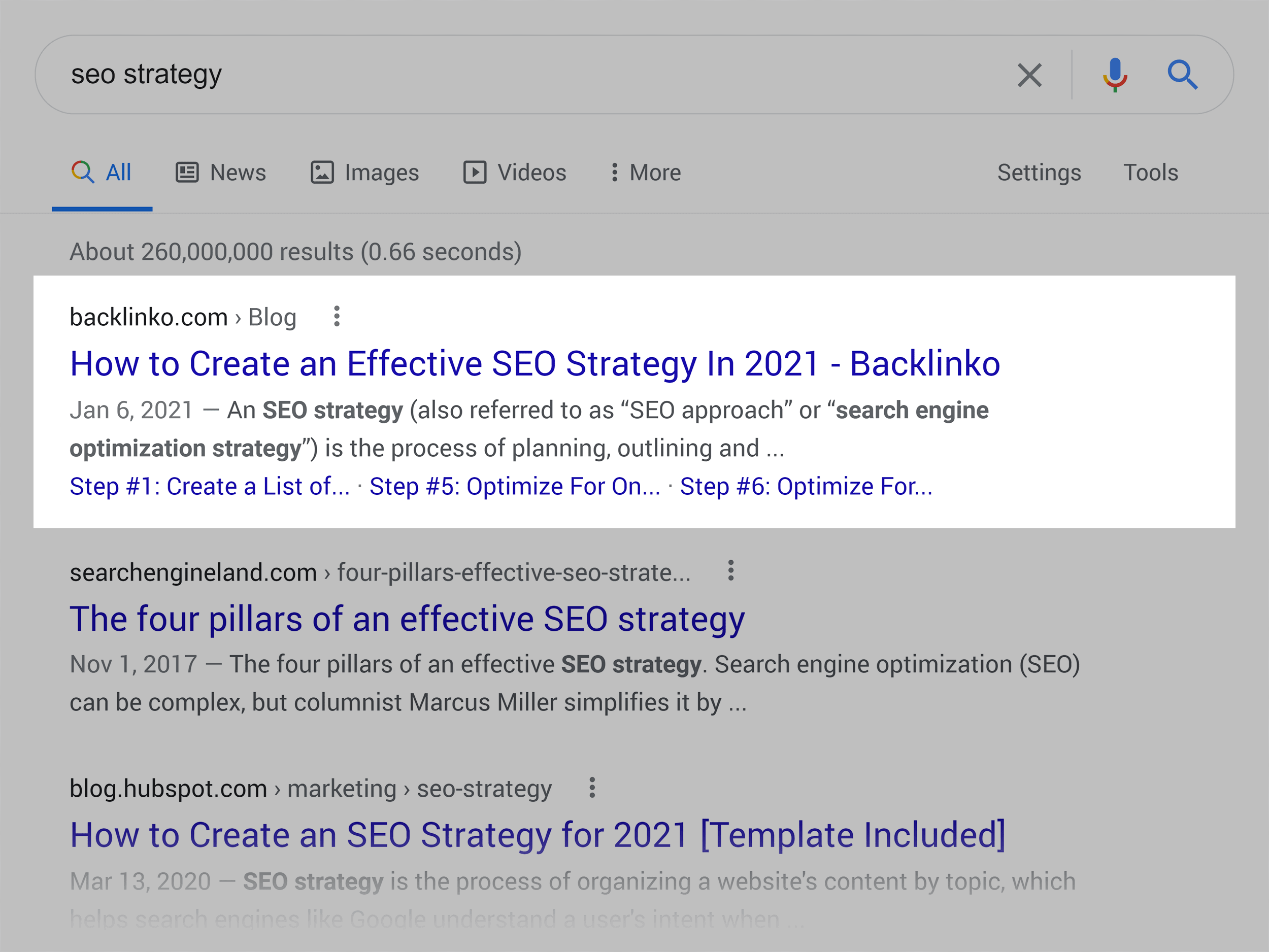
No new backlinks. No SEO tricks. I just made my content a good fit for Keyword Intent. And Google took care of the rest.
Best Practices
Uncover Search Intent
You want to take a look at the Search Intent for your keyword… before you write a single word.
As it turns out, 99% of all search terms fall under 4 different intent categories: informational, navigational, commercial and transactional.

And you can usually figure out Search Intent based on the keyword itself.
For example, a keyword like “buy a laptop stand” is obviously commercial. But a keyword like “do laptop stands help with neck pain” has clear informational intent.
That said:
Even if Search Intent is obvious, you still want to look at the pages that already rank for that keyword.
The pages on the first page have obviously passed Google’s user intent test.
Otherwise, they’d be buried on page 10.
So you want to create a page that closely matches what you find on page 1.
For example, take a look at the keyword “backlink checker”.
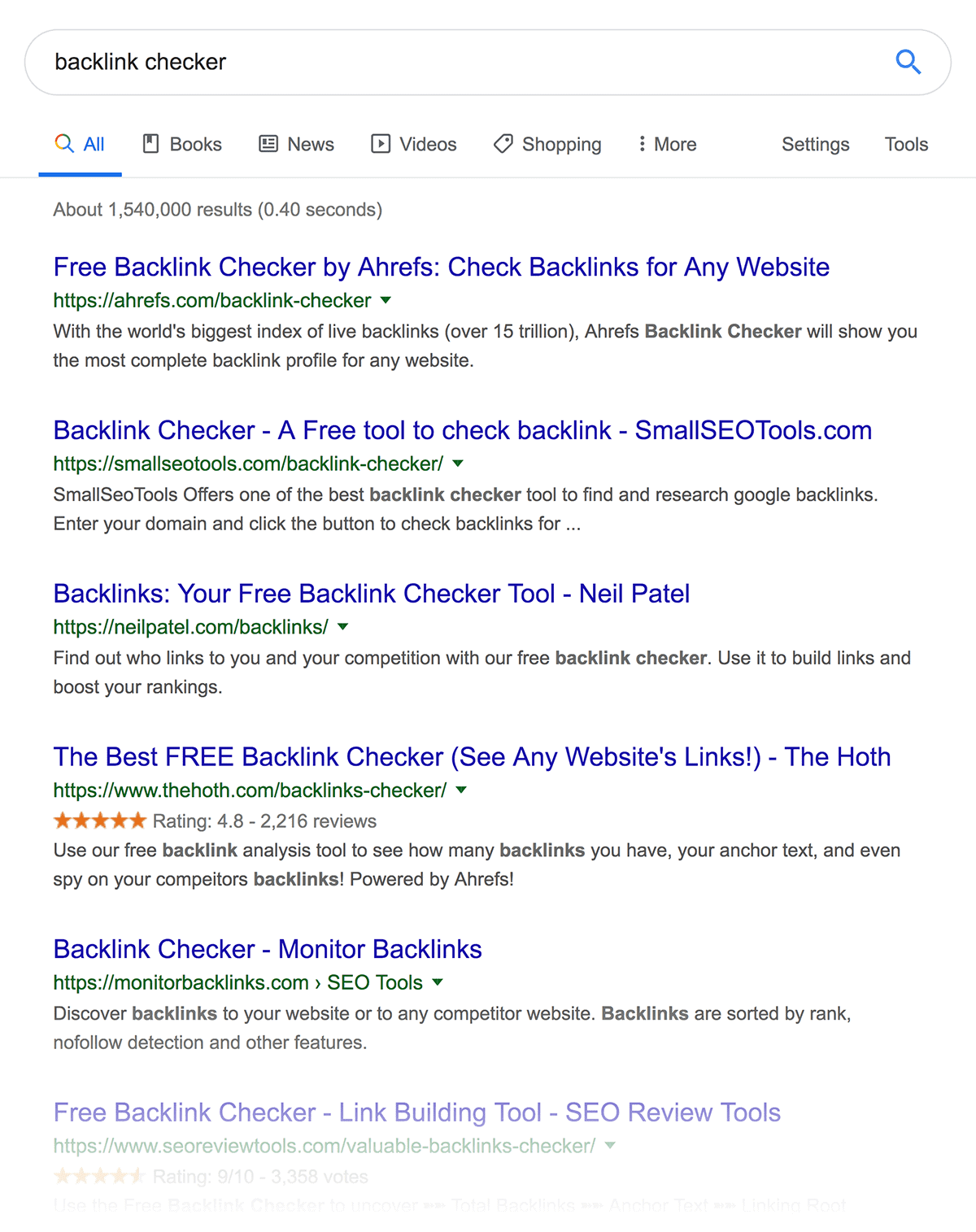
What do you notice about these results?
They’re all tools.
In other words: people that search for “Backlink Checker” don’t want a piece of content about how backlink checkers work.
They want a tool that will let them check their backlinks.
On the other hand, look at the results for “best backlink checker”.
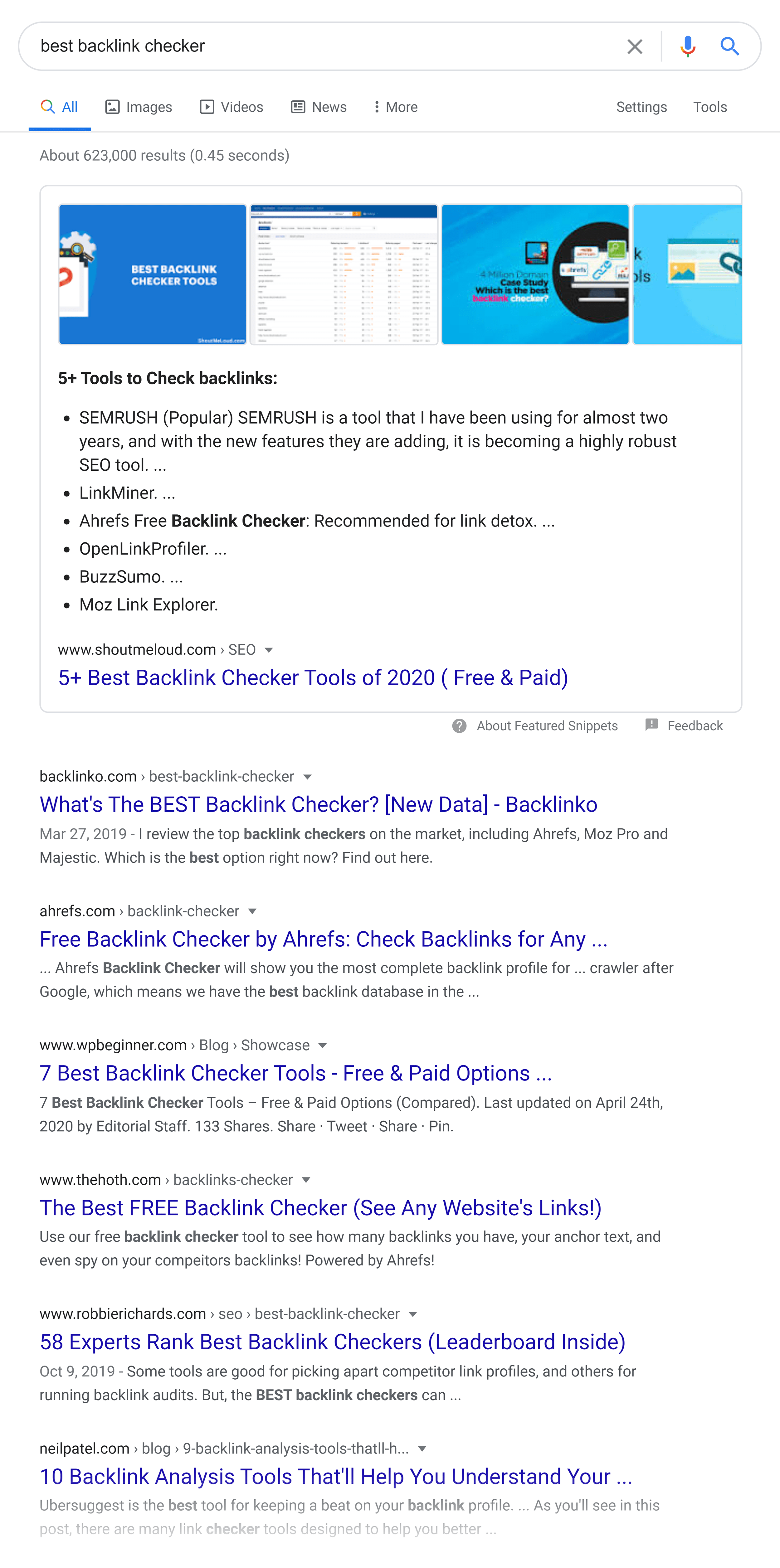
This time, the results are dominated by content that outlines the best tools.
And, as you might have noticed, one of my old blog pages ranked in the top 3 for that keyword.
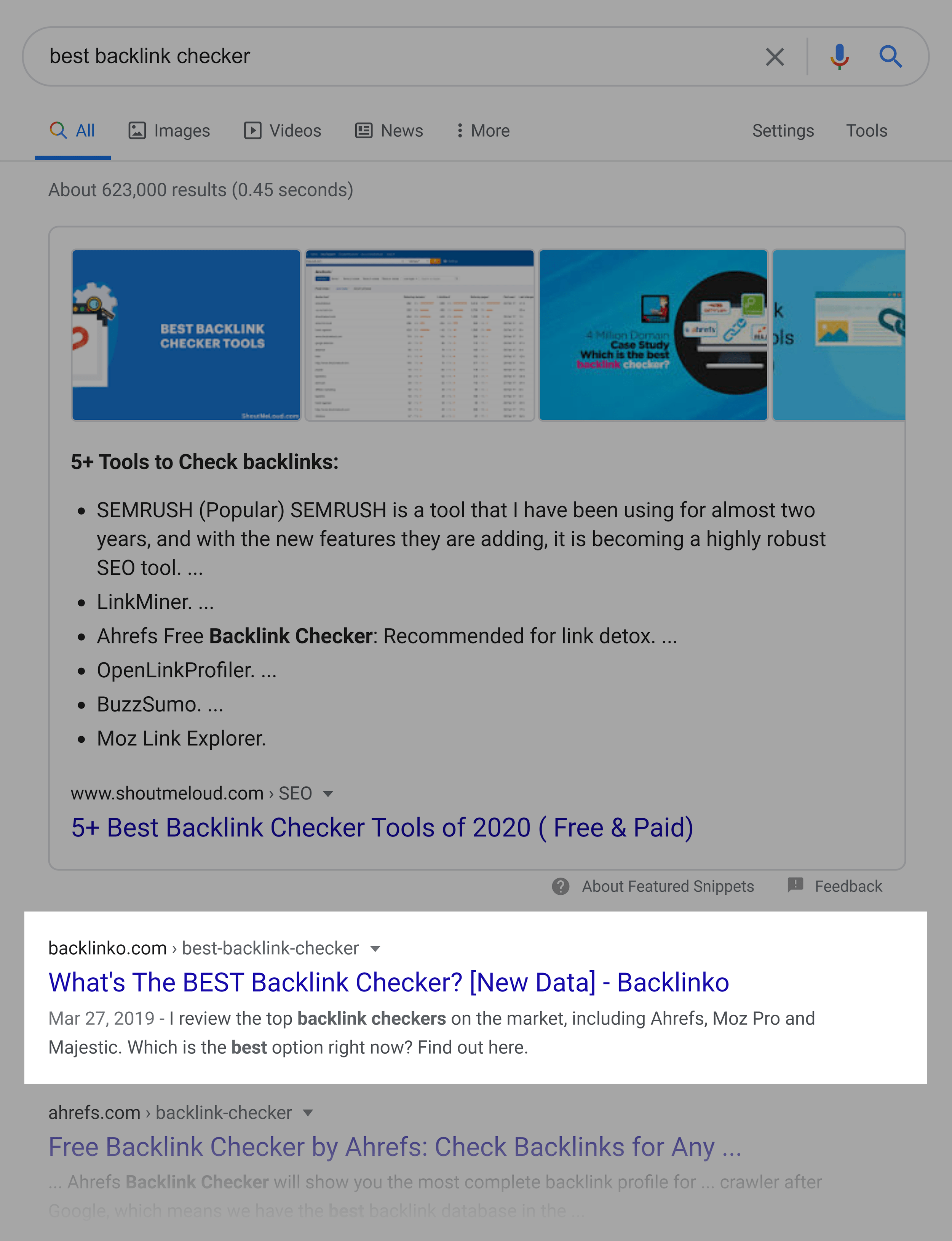
That’s because it satisfies that keyword’s Search Intent.
To be honest, I’d also LOVE to rank for “backlink checker”. It gets significantly more searches than “best backlink checker”.
That’s why I recently created a tool that satisfies both Search Intents. It’s a free tool and a detailed guide that compares each of the best backlink checker tools – Semrush, Ahrefs, Moz, and Majestic.

Optimize For User Experience
You might be wondering:
How does Google know is a page is a good fit for Search Intent?
They look at how people interact with the SERPs.
In other words:
They can tell if people aren’t loving a specific search result. And if they note that a search result ISN’T a good fit for a keyword, they’re going to downrank it.
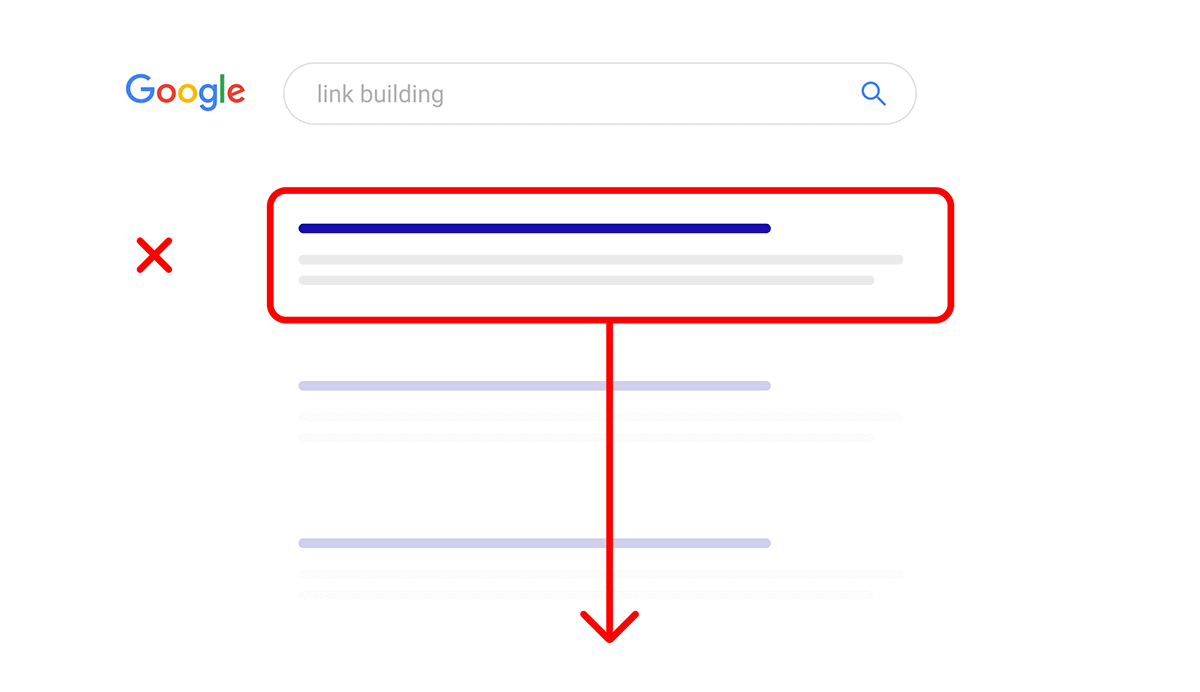
Specifically, Google doesn’t want to see people “pogo sticking” around the search results.
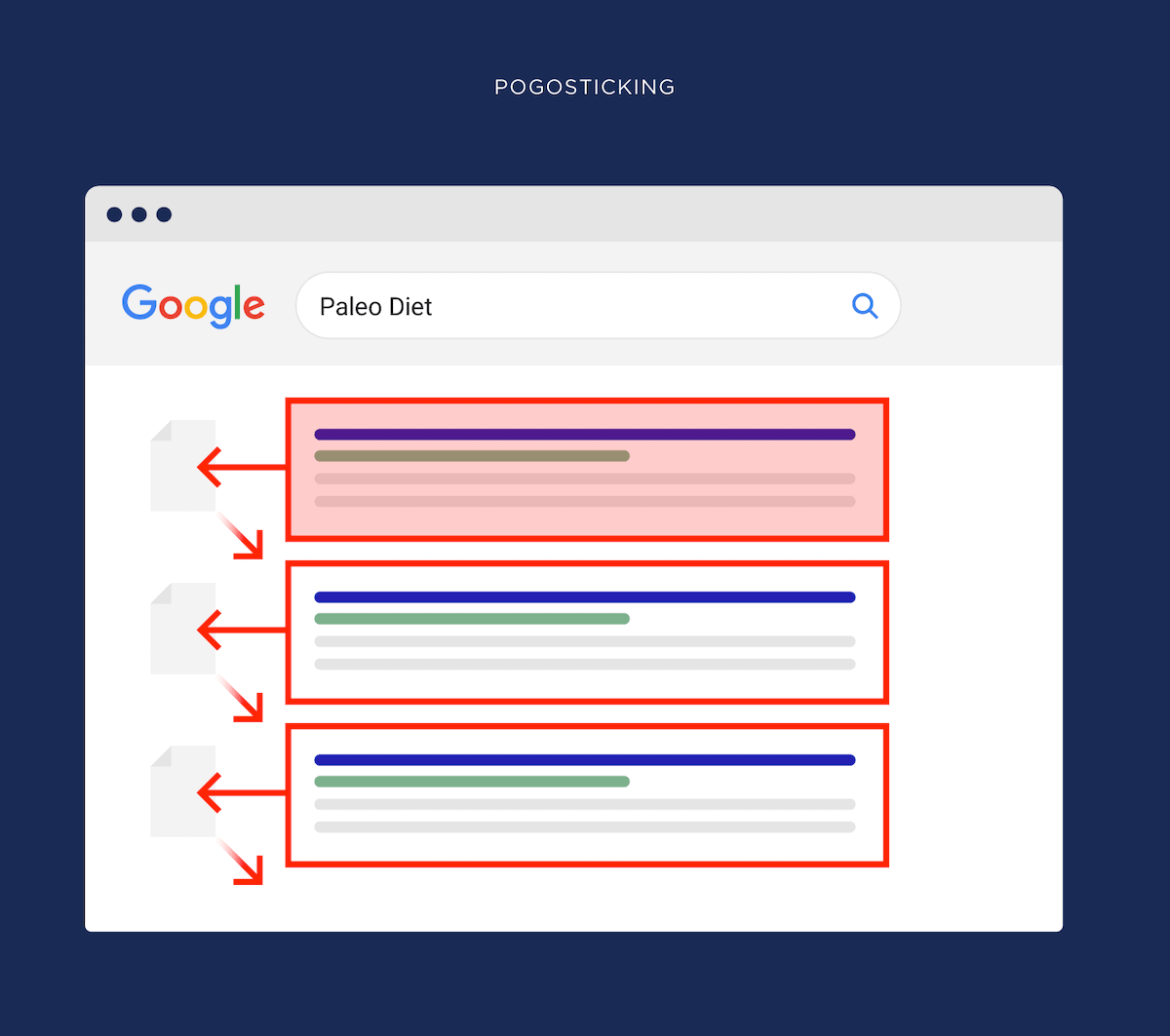
Instead, they want to see people land on a result. And get the answer to their search query from that single page.
That’s why, when it comes to SEO in 2021, user experience is KEY.
Here are a few tips to ensure that Google searchers have a great experience with your content.
- Limit Popups: Google doesn’t like popups. And neither do users. So if you do use a popup, I recommend only using them with “exit intent” turned on.
- 14px+ Font: You can have the greatest blog post every written. But if it’s hard to read, people are going to bounce and pogo stick.
- Use Subheadings: Google searchers want their answers FAST. Which means they aren’t going to read every single word of your page. Subheadings let users skim your content for the main points.
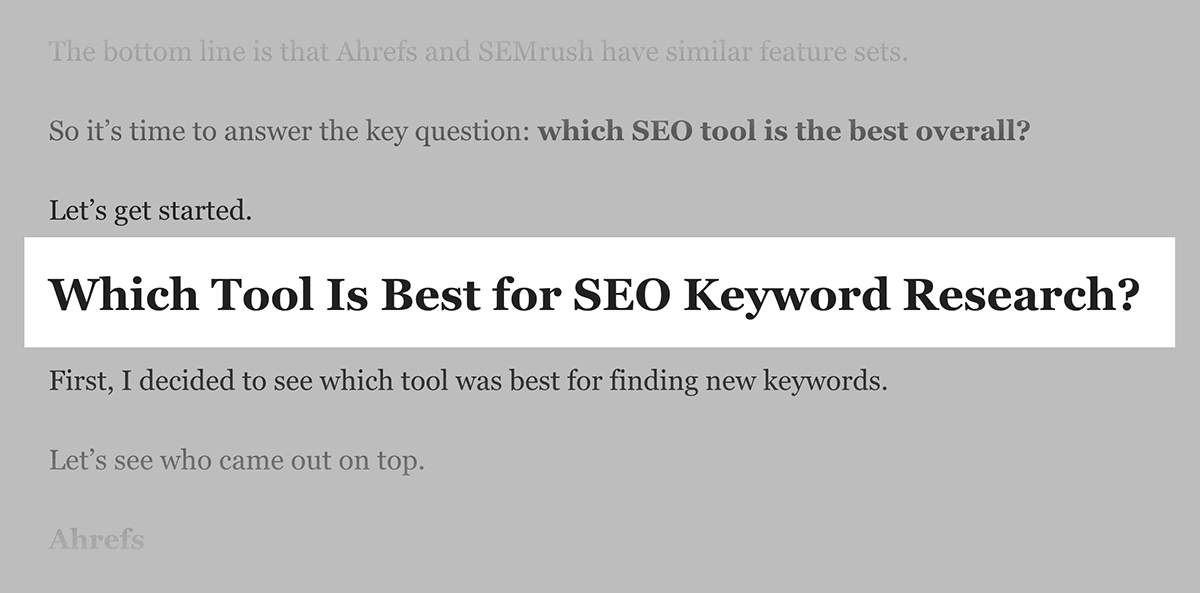
- Use Videos and Images: This makes your content easier to user and understand. That’s why I use a ton of these in every post.

- Look at Google Analytics: Focus on improving Bounce Rate and Avg. Session Duration metrics on key pages.
Improve Existing Content
Do you have a page on your site that “should” rank… but won’t?
If so, you probably have a Search Intent problem.
So don’t limit this process to new content that you publish.
In fact, going back and re-optimizing old content for Search Intent is one of the fastest ways to get more organic traffic to your website.
(Especially when you do a full content audit on your site).
For example, this page used to rank in the top 5 for the keyword “backlinks”.
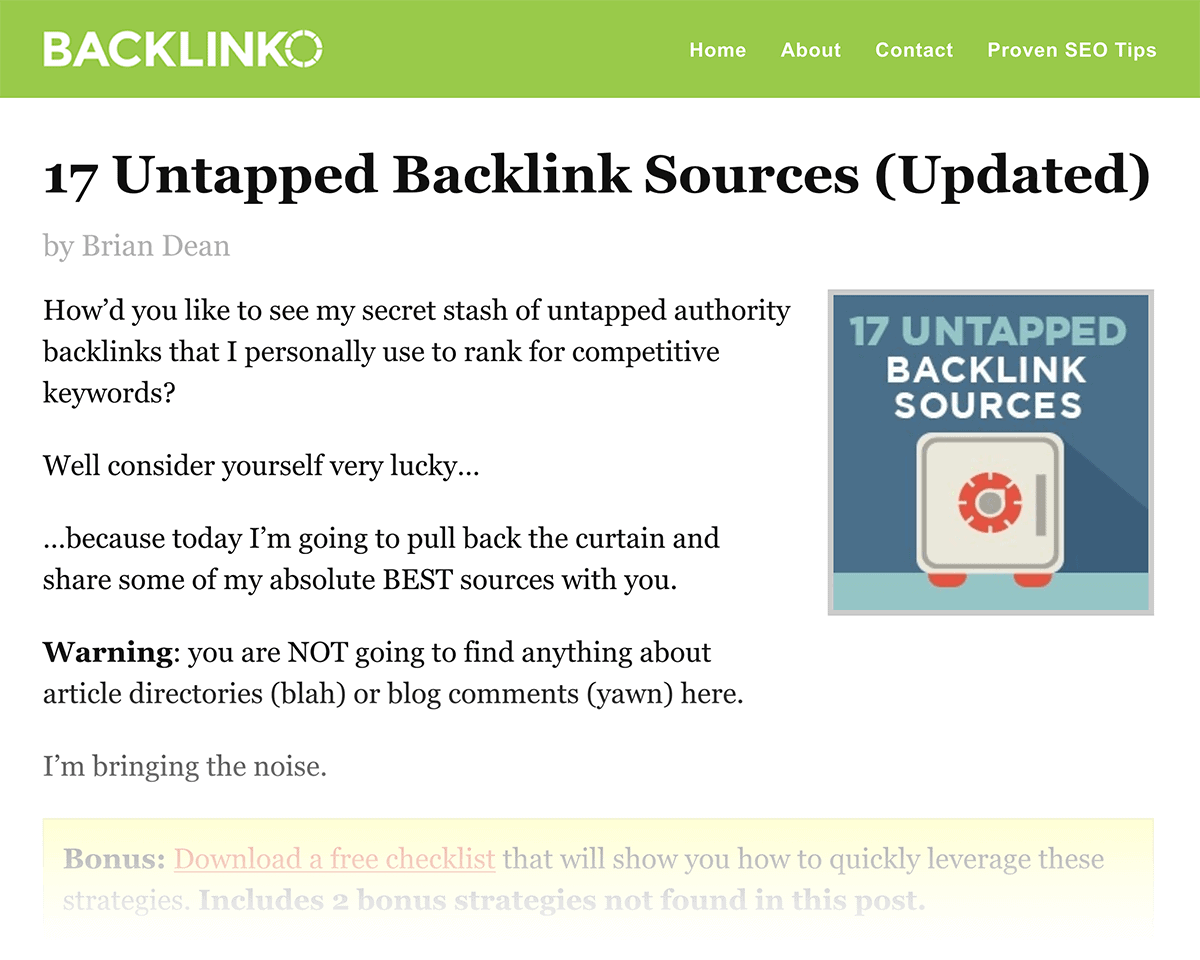
But as Google’s algorithm put more and more emphasis on Search Intent, my rankings (and search engine traffic) started to dip.
Here’s the Google Analytics screenshot for that page:

And when I looked at this page with Search Intent in mind, I realized why:
People that searched for “backlinks” were relatively new to SEO. They were looking for more of an overview of how link building worked.
But my post was designed for intermediate and advanced SEOs. It contained advanced tips and strategies that SEO pros loved.

But this kind of thing would go right over the head of anyone searching for “backlinks”.
So I rewrote my guide so it would be a better fit for people new to SEO.
(I also tried to incorporate as much as I could from my original post into this new guide. That way, I didn’t have to start the guide from scratch.)
The result?
What are Backlinks? And How to Build Them.
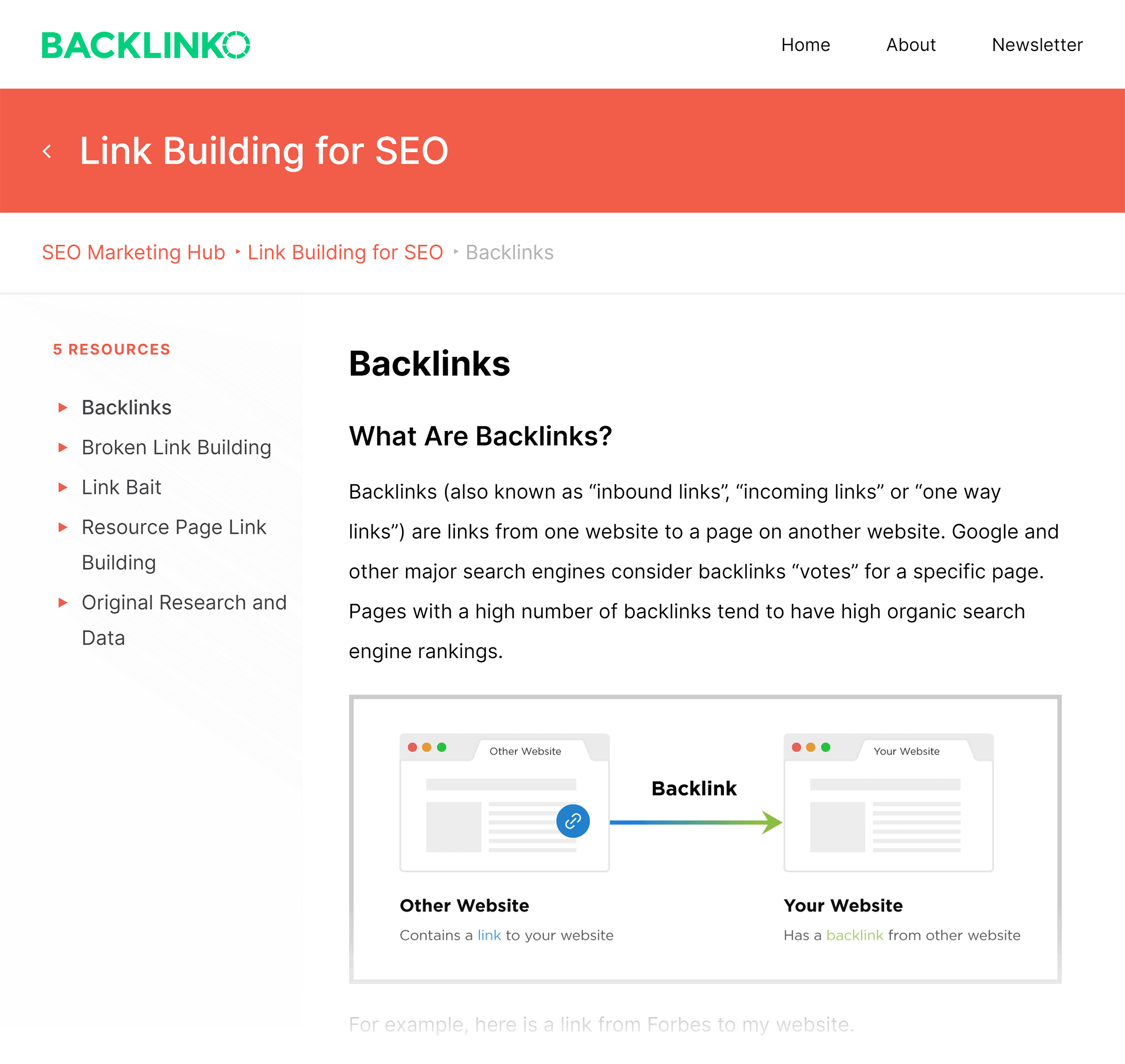
This new guide instantly shot to the top of Google… right where it was before.
In fact, it’s now sitting pretty in the top 5.
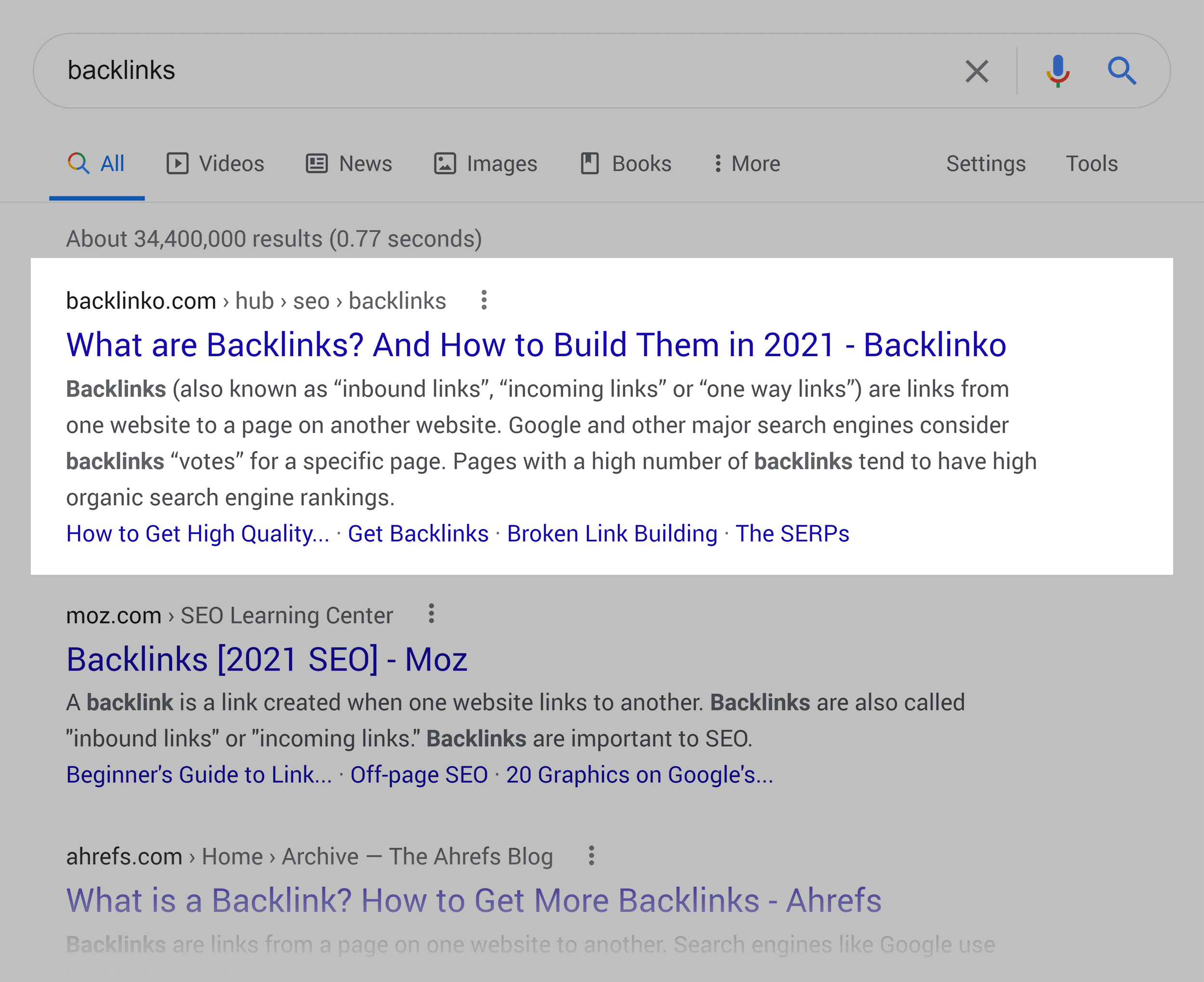
Look at “People also ask…”
You might have noticed more and more “People also ask…” boxes in the search results:
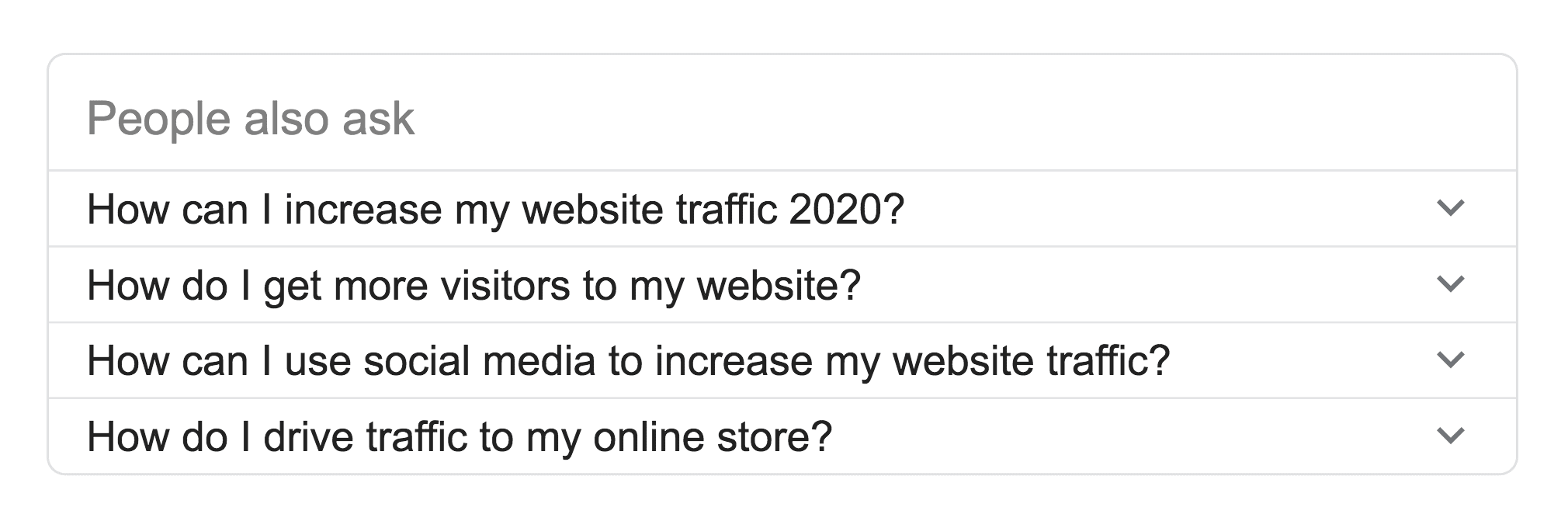
Well, as it turns out, these are a GOLDMINE of User Intent info.
Why?
Because these boxes are literally telling you: “These are questions people have around this topic”.
And when your content answers those questions, you can CRUSH user intent.
For example, some time ago I published a post about nofollow links.
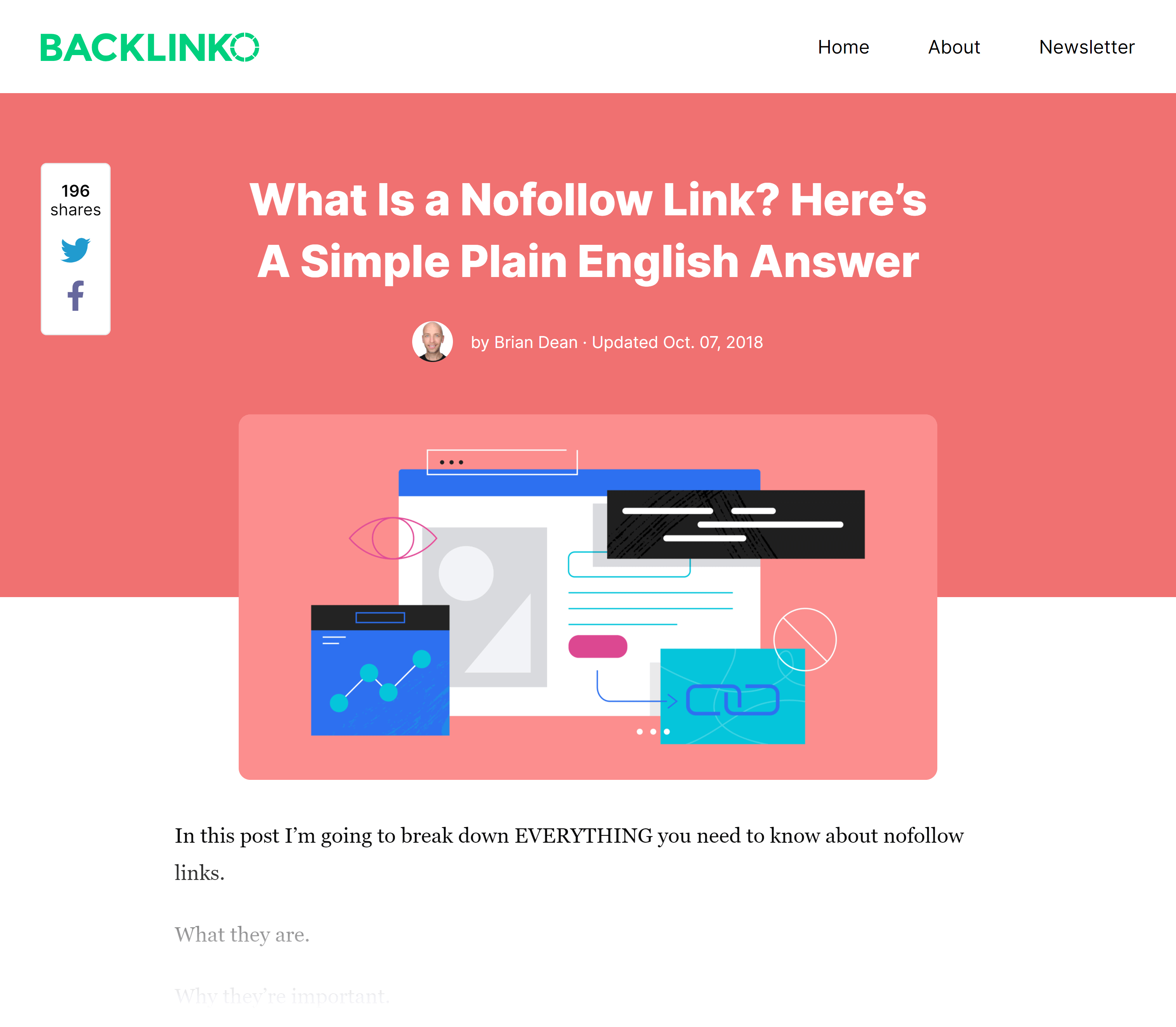
And to make sure that my content satisfied User Intent, I looked at the “People also ask…” questions:

And I answered those questions in my post:
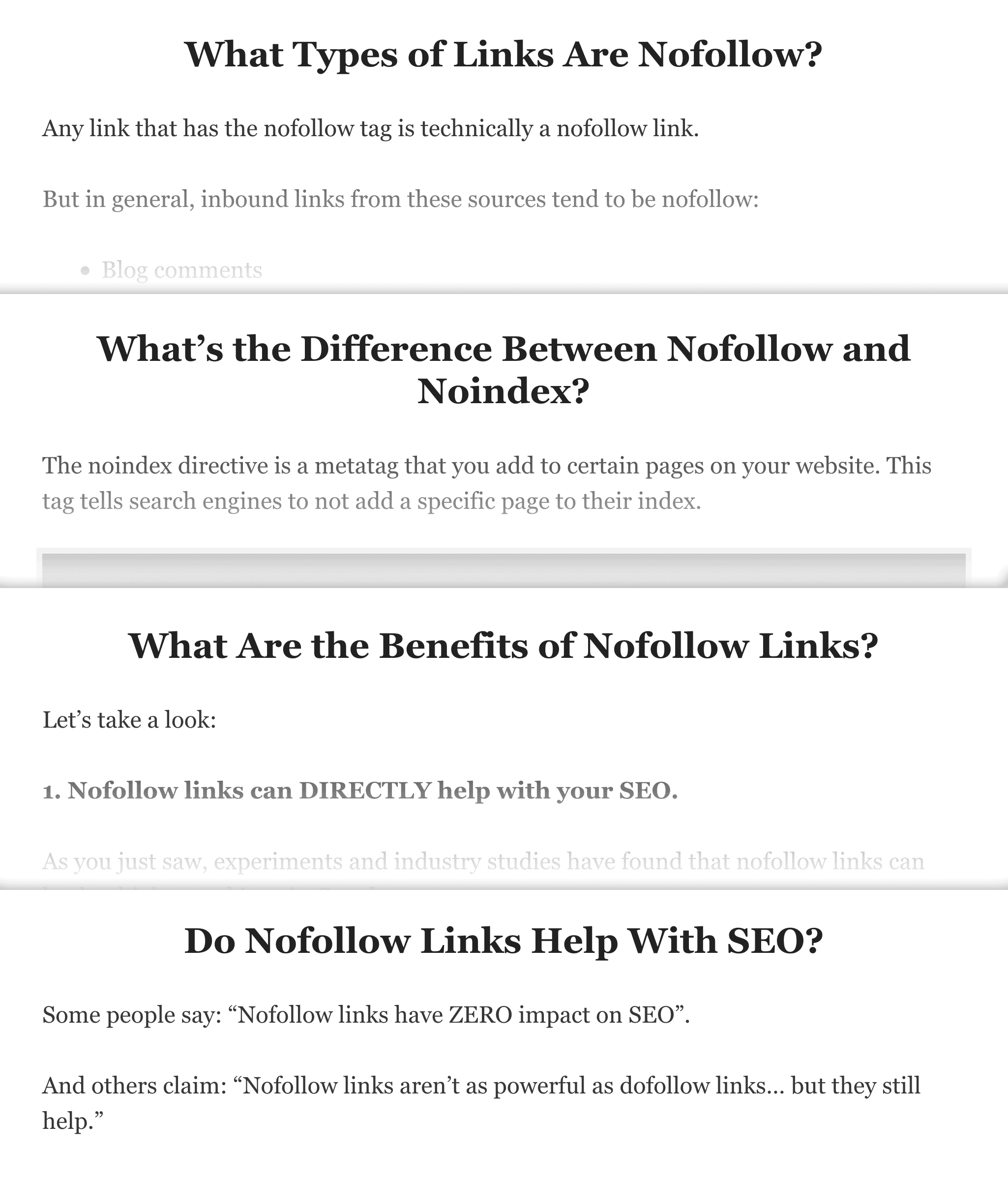
Optimize Commercial Pages
Here’s an important thing to keep in mind about Search Intent:
It’s not just about content.
In fact, there are tons of search terms out there where people DON’T want content.
Instead, they want to buy something, sign up for a free trial, or get a quote.
For example, check out the keyword “cisco wifi router”.
You might be tempted to create a piece of high-quality content around this keyword.
But that would be a mistake. Like most keywords that include a specific product, this term has transactional intent written all over it.
And the search results back this up.
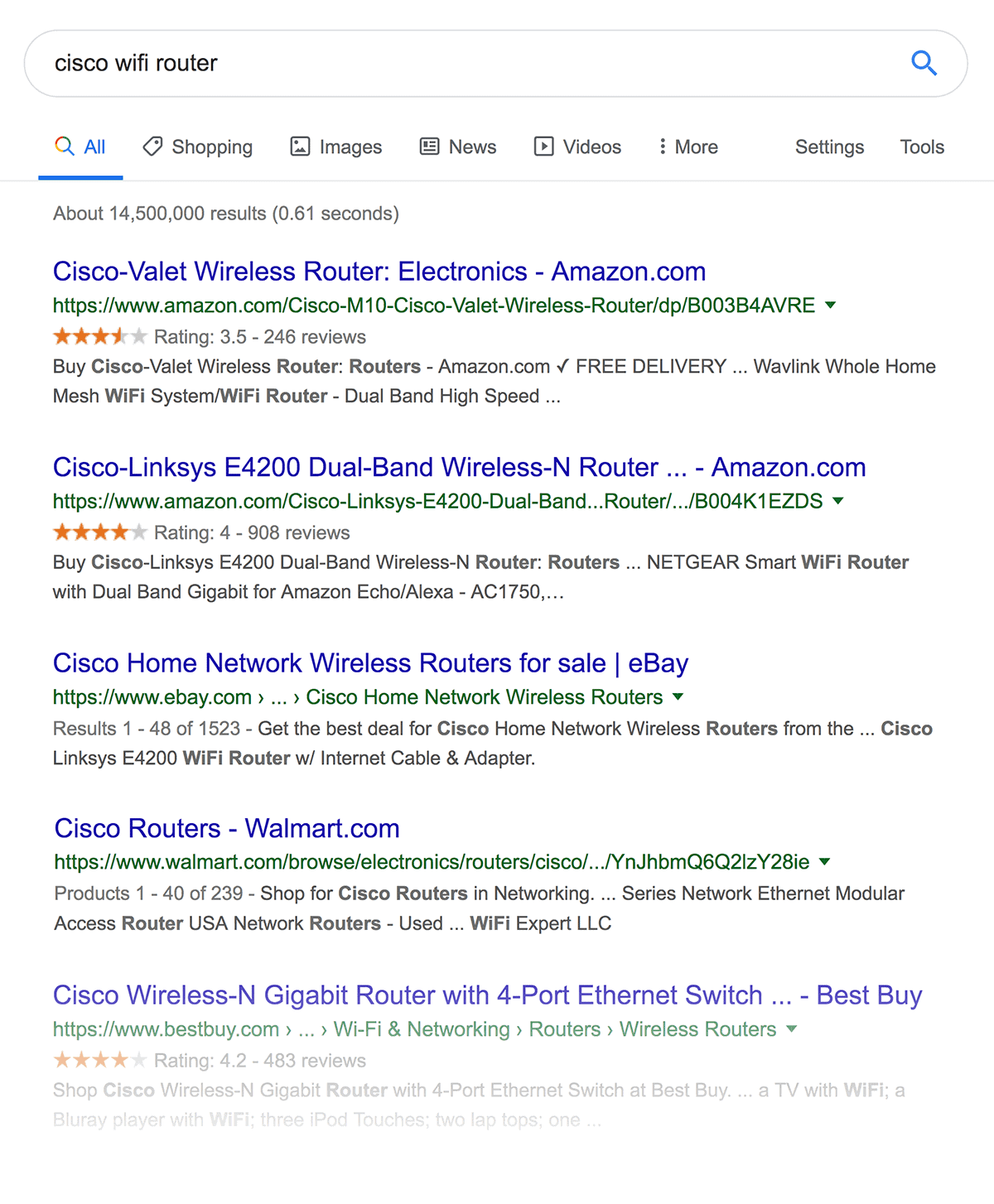
They’re almost all eCommerce product pages!

There literally isn’t a single blog post or article in the top 10.
So if you want to rank for this keyword, you’d need to create a page optimized for Search Intent.
(Specifically, a page that sold that specific type of router.)
How about another example?
We launched this landing page about our flagship SEO training program.

Well, before I wrote the content for that page, I took a look at the top 10 results in Google.
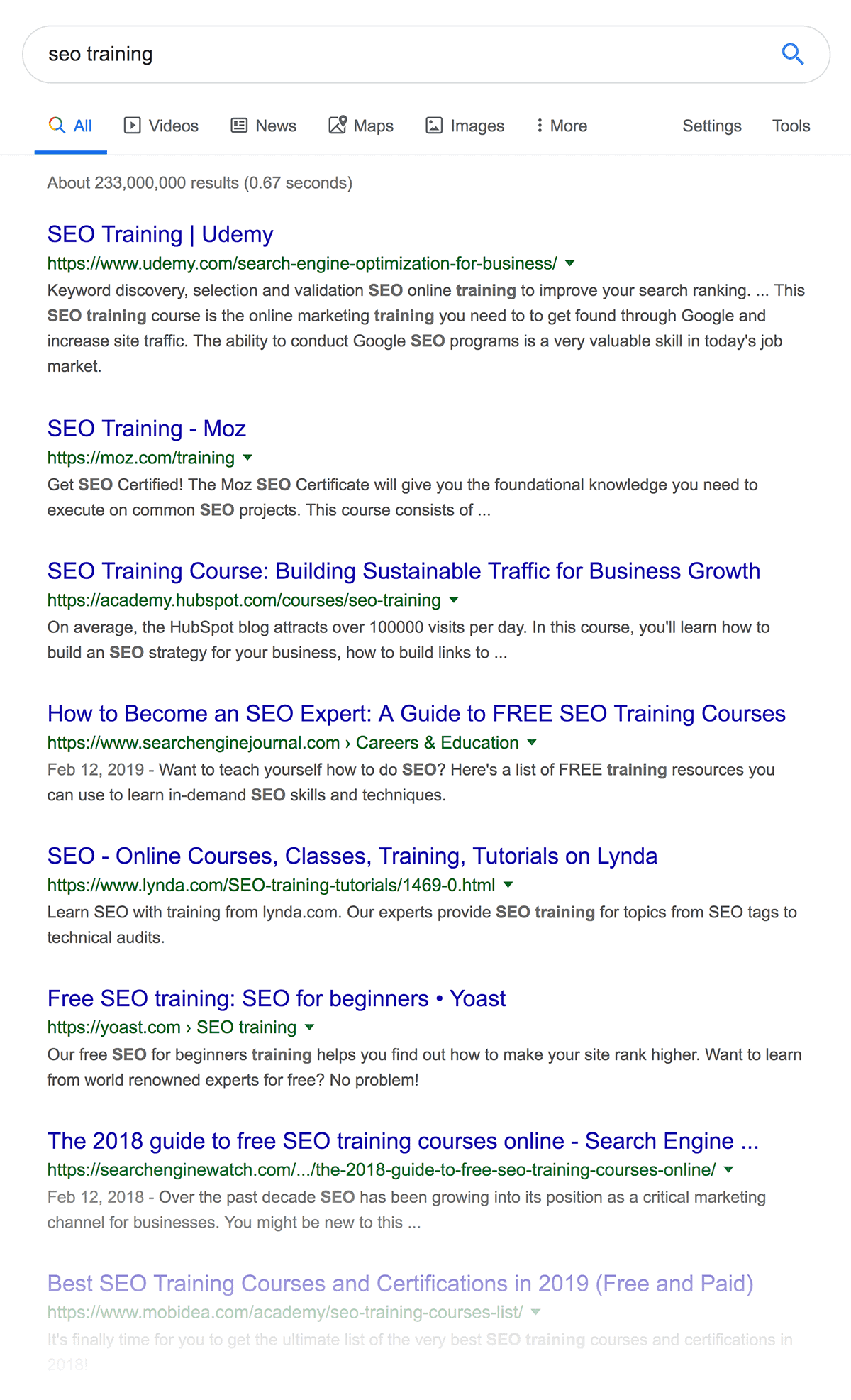
And I noticed that most of the pages ranking for that keyword were about specific SEO courses. Not rankings of the top 10 programs. Or how to choose a program.
In other words: the Search Intent for this keyword was highly commercial.
So I made sure to create a page that was designed to give Google searchers what they want: information on a single program. And a way to sign up.
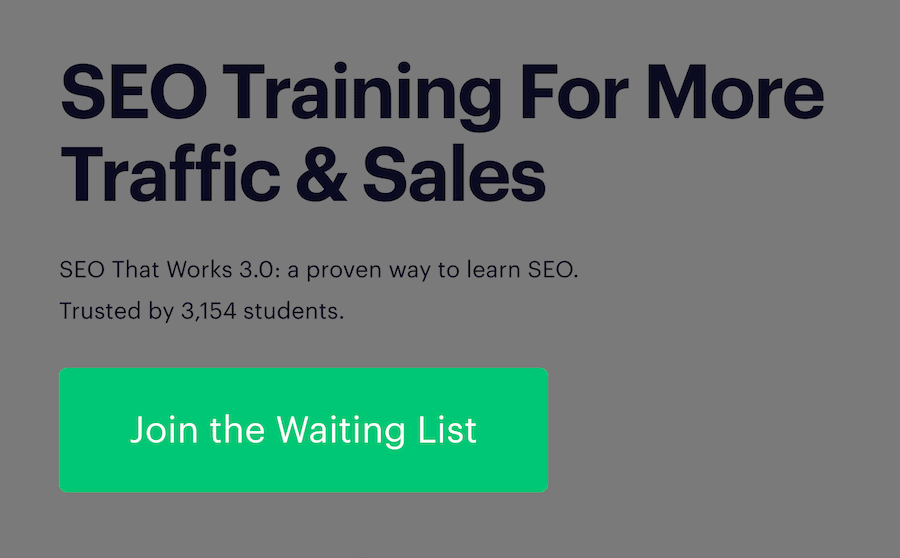
We’ve got a long way to go. But the page cracked the top 10… which is a good start.
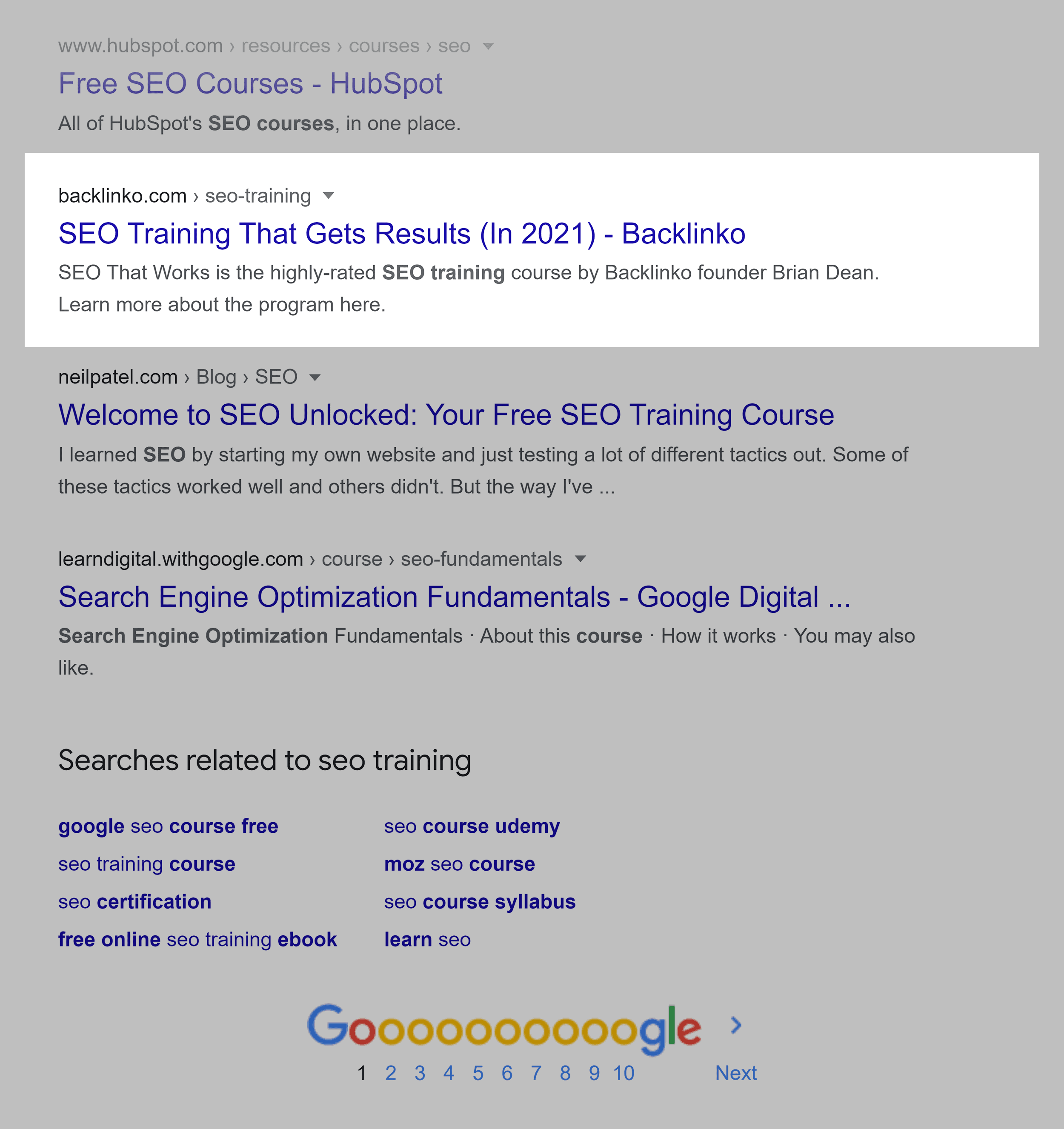
Navigational Queries
Navigational queries help people find a specific website… or a page on a website (like the homepage or about page).
For example, someone searching for “Moz pricing” wants to see the pricing page on Moz.
While you can rank for Navigational Queries, your click-through-rate will probably be on the low side.
That’s because people that search for these terms don’t want to go to a third-party website.
For example, we rank on the first page for “Google Search Console”.

That page gets a ton of impressions… but not many clicks.

Why?
Because “Google Search Console” is a navigational query. Most people click on the 1st results without even scanning the first page.
So while this is a nice keyword to rank for (after all, some people do click on our result), it’s never going to be a huge keyword for us.
Keywords With Multiple Intents
Sometimes you’ll come across a keyword with multiple user intents.
This is surprisingly common.
In fact, Google’s rater guidelines talks a lot about keywords that have different possible user intents.

What should you do if you run into a keyword like this?
Don’t hedge your bets.
Instead, optimize HARD for one type of user intent.
For example, one of my high-priority keywords is “SEO audit”.
Well, when I looked at the results for that keyword, I saw that there were two totally different types of user intent.
Some people that searched for “SEO audit” wanted software:
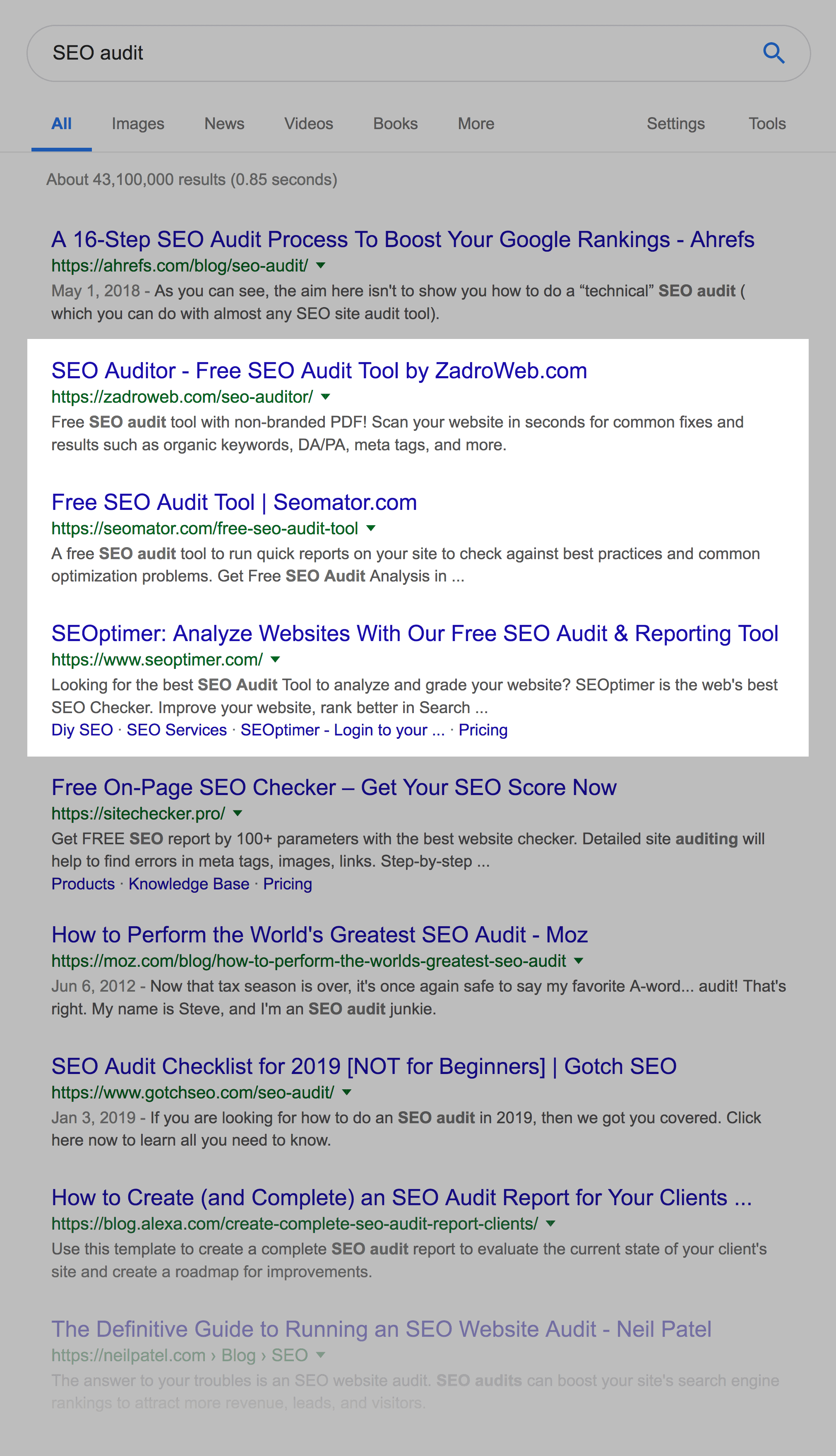
Others wanted a process to follow:
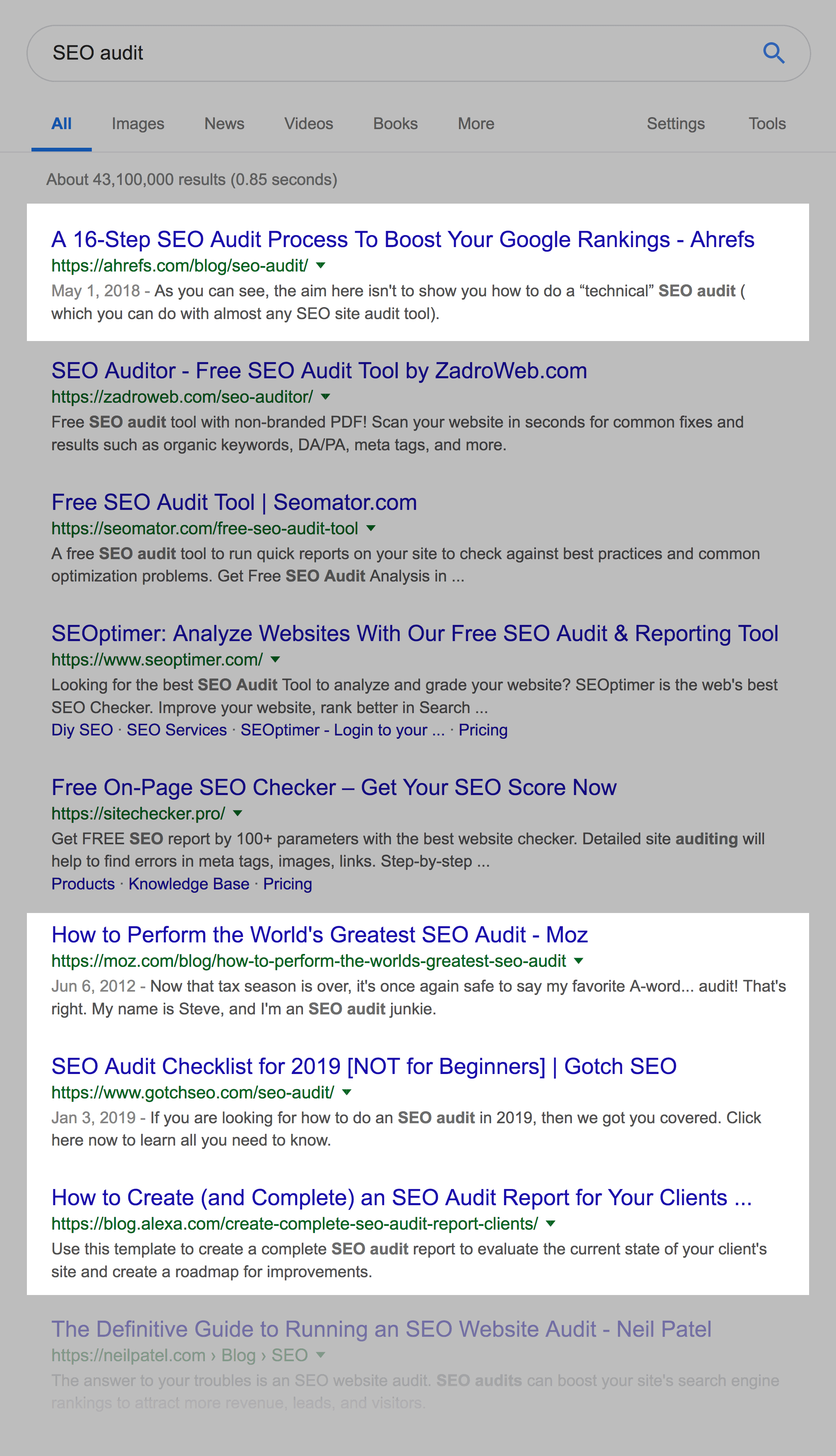
So I created a guide that fully gave people a process they could use:

Which helped my page quickly hit the top 5 in Google:
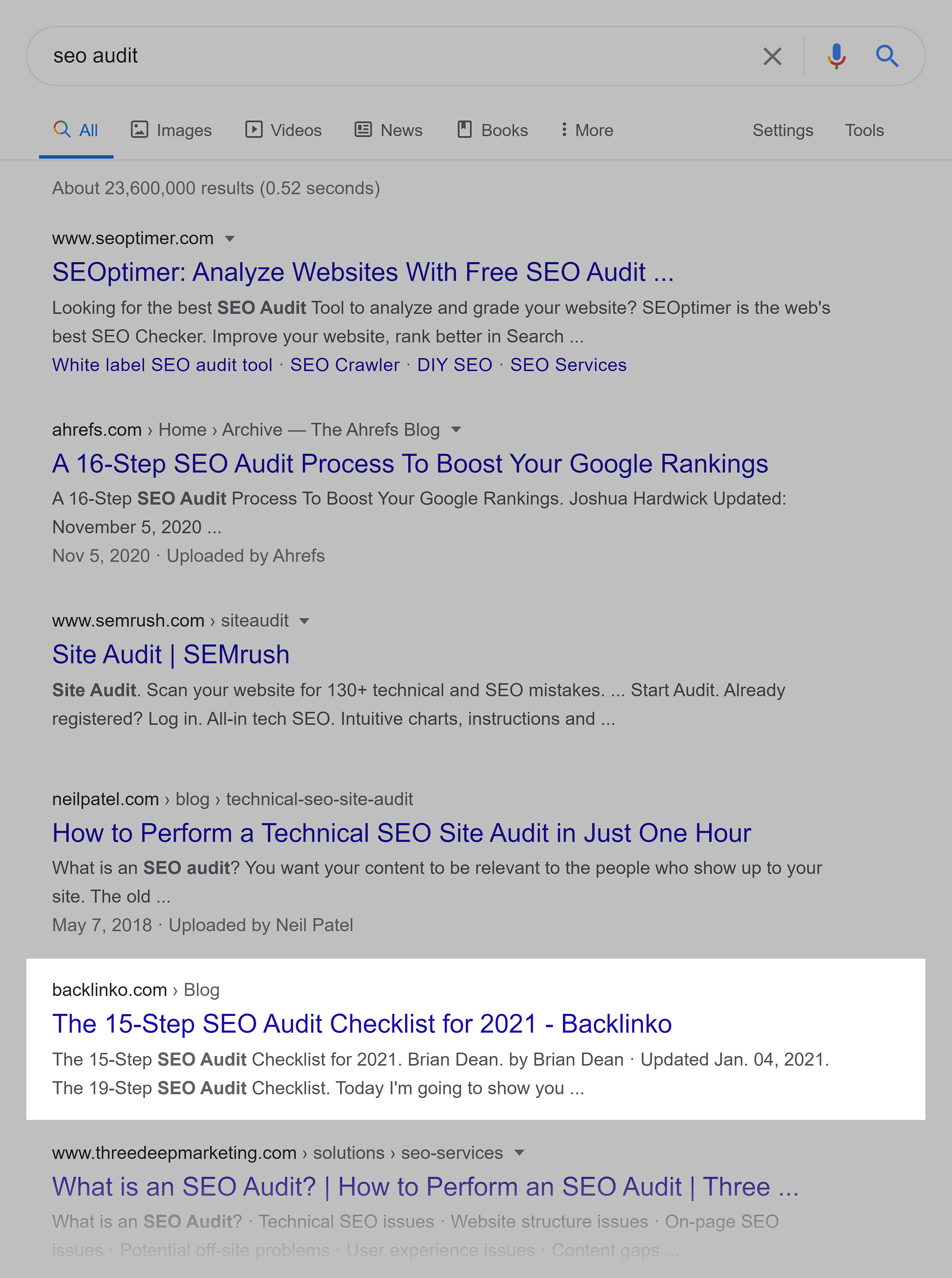
Advanced Search Intent Optimization
It’s one thing to figure out if a Search Intent is Commercial or Transactional.
But if you want to take this process to the next level, you need to get SUPER granular.
For example, take a keyword like “noise canceling headphones”.
There’s obviously strong transactional intent with this keyword.
But what does that mean, exactly?
Is this transactional in the sense that they’re ready to buy right now?
Or is the person searching for that keyword still weighing different options?
The answer usually lies in the search results.
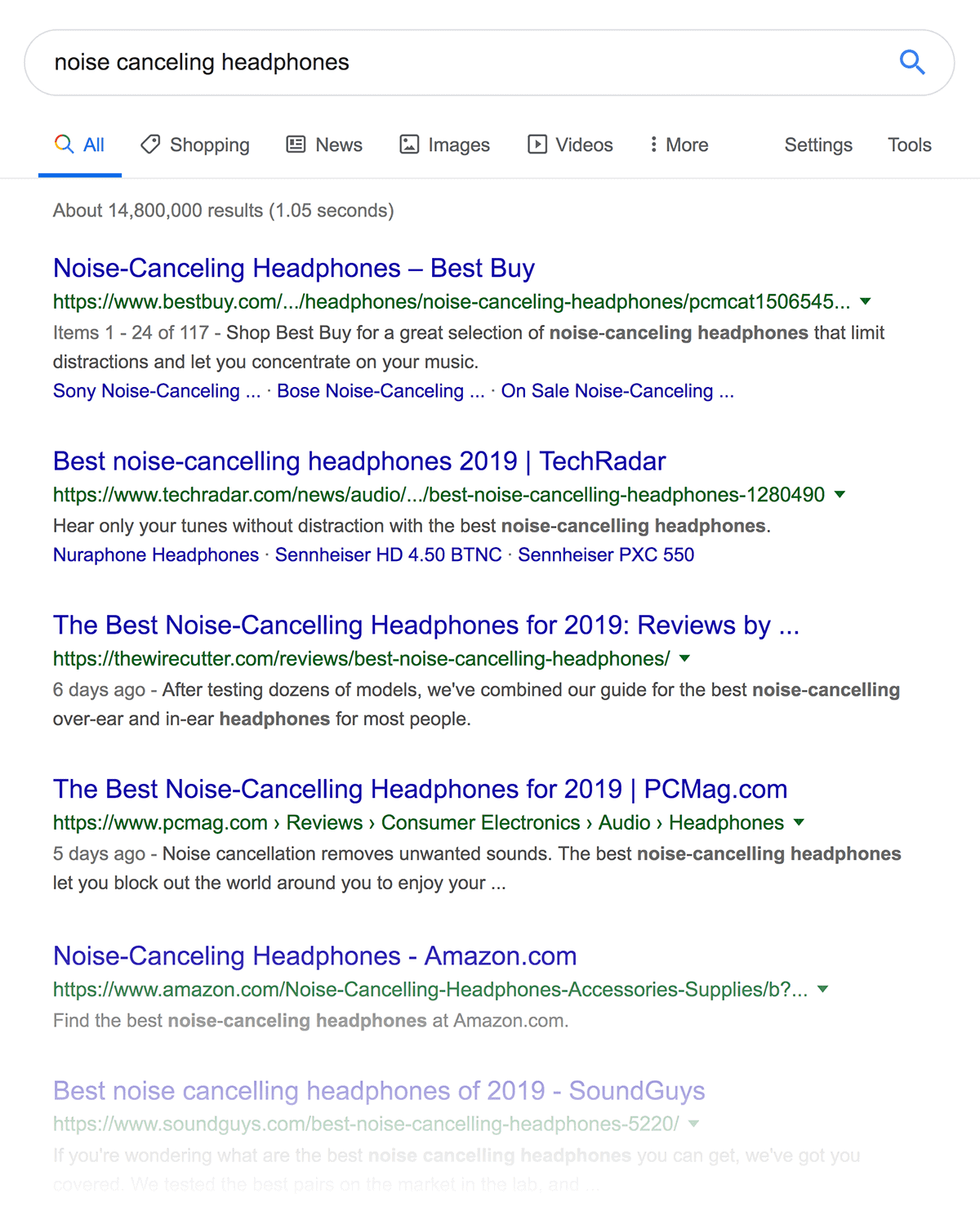
As you can see, someone searching for this keyword is still early on in the buying process. So they want content that’s transactional… but presents them with a few different options.

Let’s look at one more example of this type of advanced Search Intent analysis: “how to do a burpee”.
This keyword clearly falls under the “Informational” category.
But what kind of info do people want?
A list post? A case study? A video?
Well, based on the SERPs, you can tell that people want a set of steps.
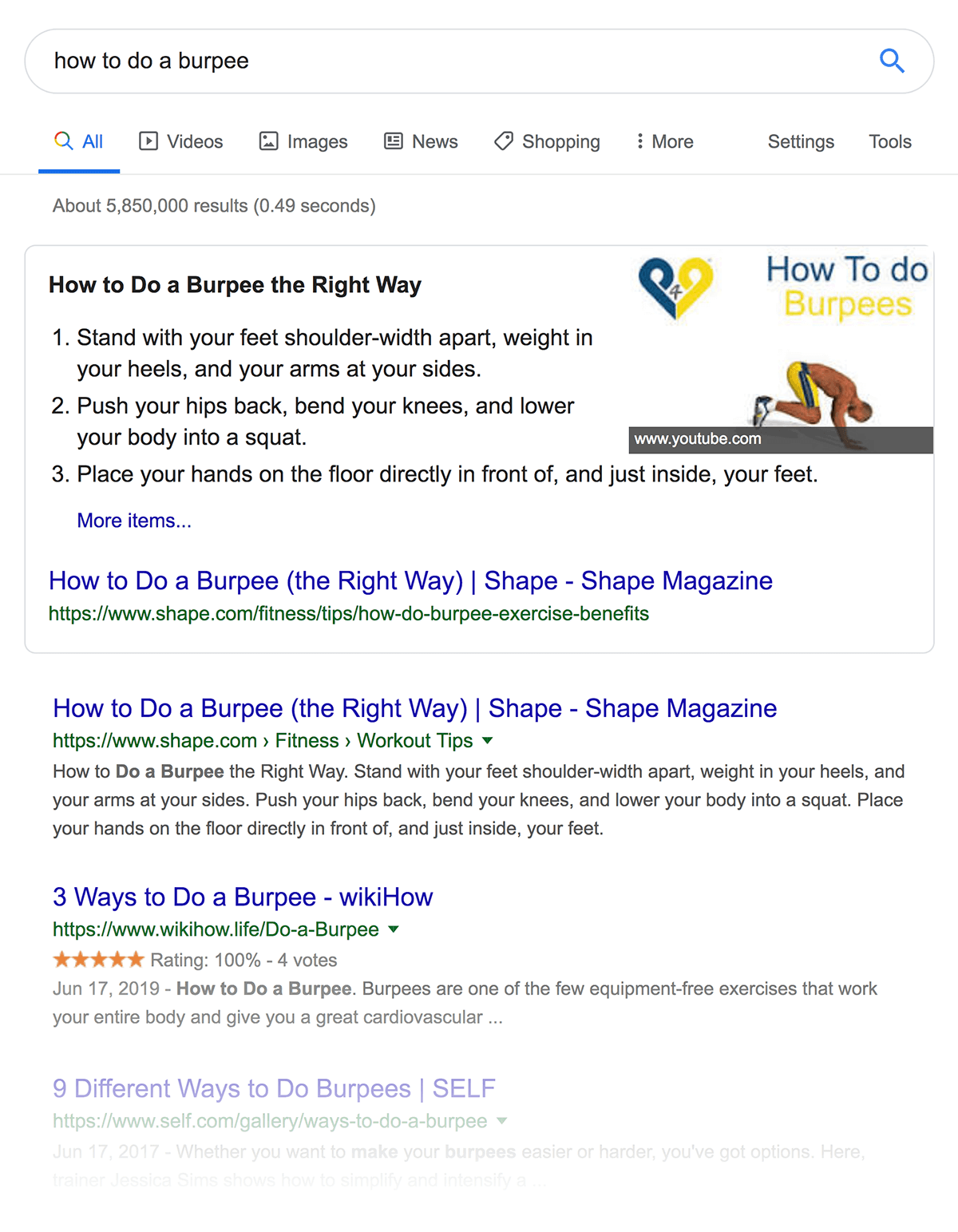
(In fact, most people that search using “How to” keywords want steps.)
So if you want to rank for that term, I highly recommend writing a post that includes steps.
As a bonus, clearly-outlined steps can also help you rank in the Featured Snippets box.
For example, our content appears in the Featured Snippet box for the term: “how to rank higher on Google”.

Learn More
Why Search Intent Is the Secret to Superior Keyword Research: Excellent video that outlines how to keep intent in mind as you do keyword research.
SEO Case Study: How I Increased My Organic Traffic 652% in 7 Days: How “The Skyscraper Technique 2.0” boosted traffic to one of my pages by more than 6x.
SEO Ranking Factor #1 is Satisfaction: A well-written guide to making sure your content is making Google searchers happy.